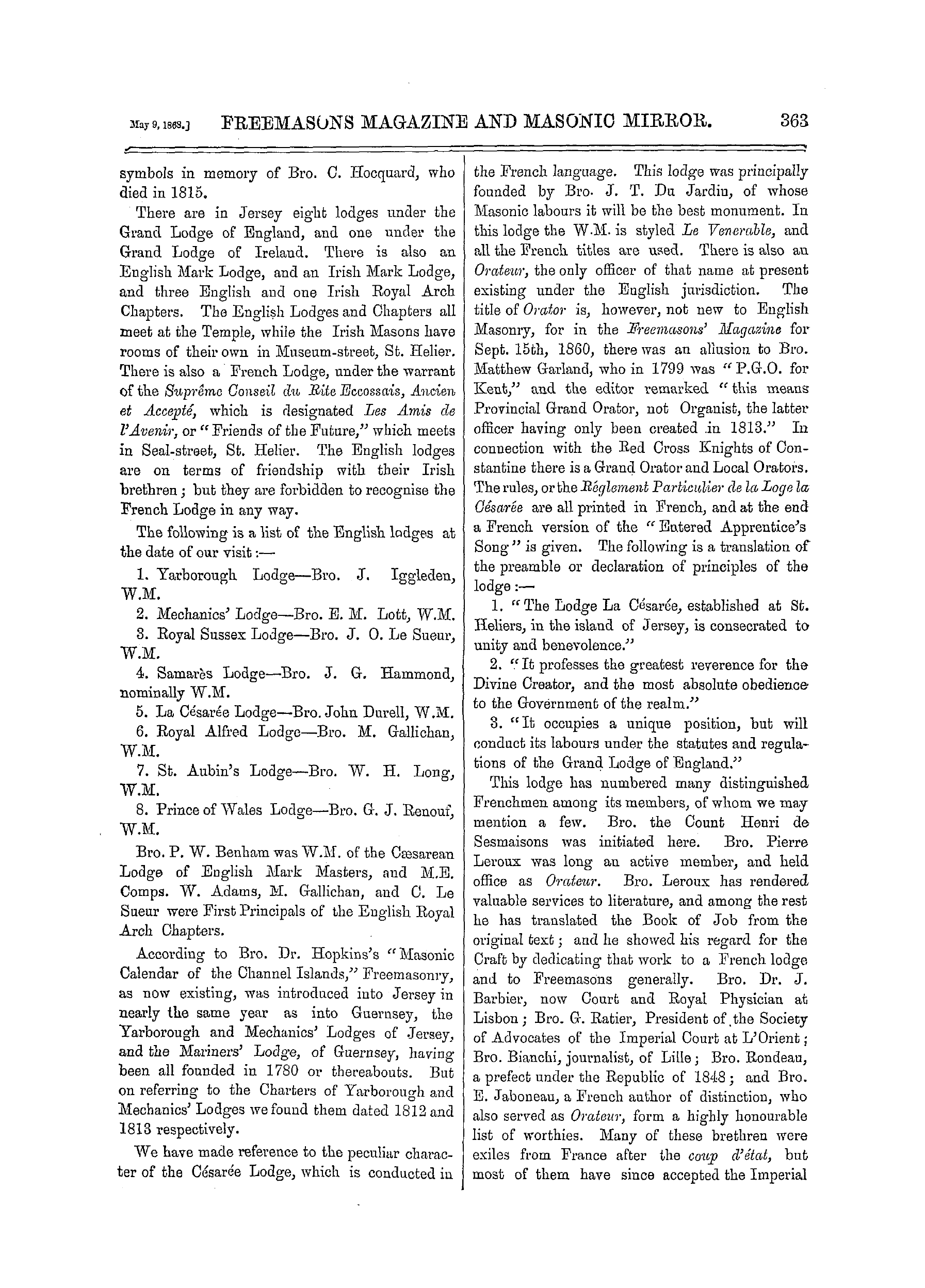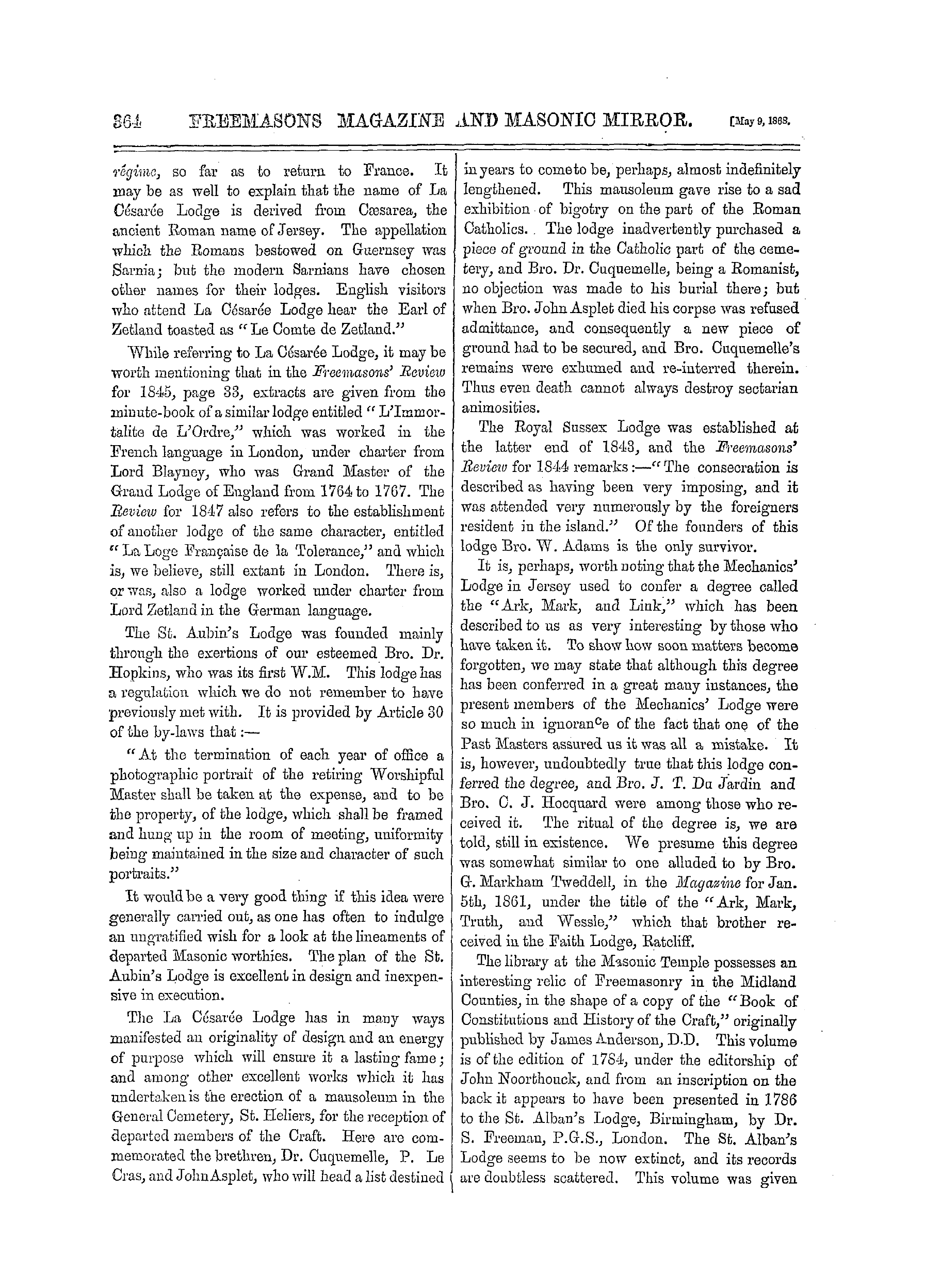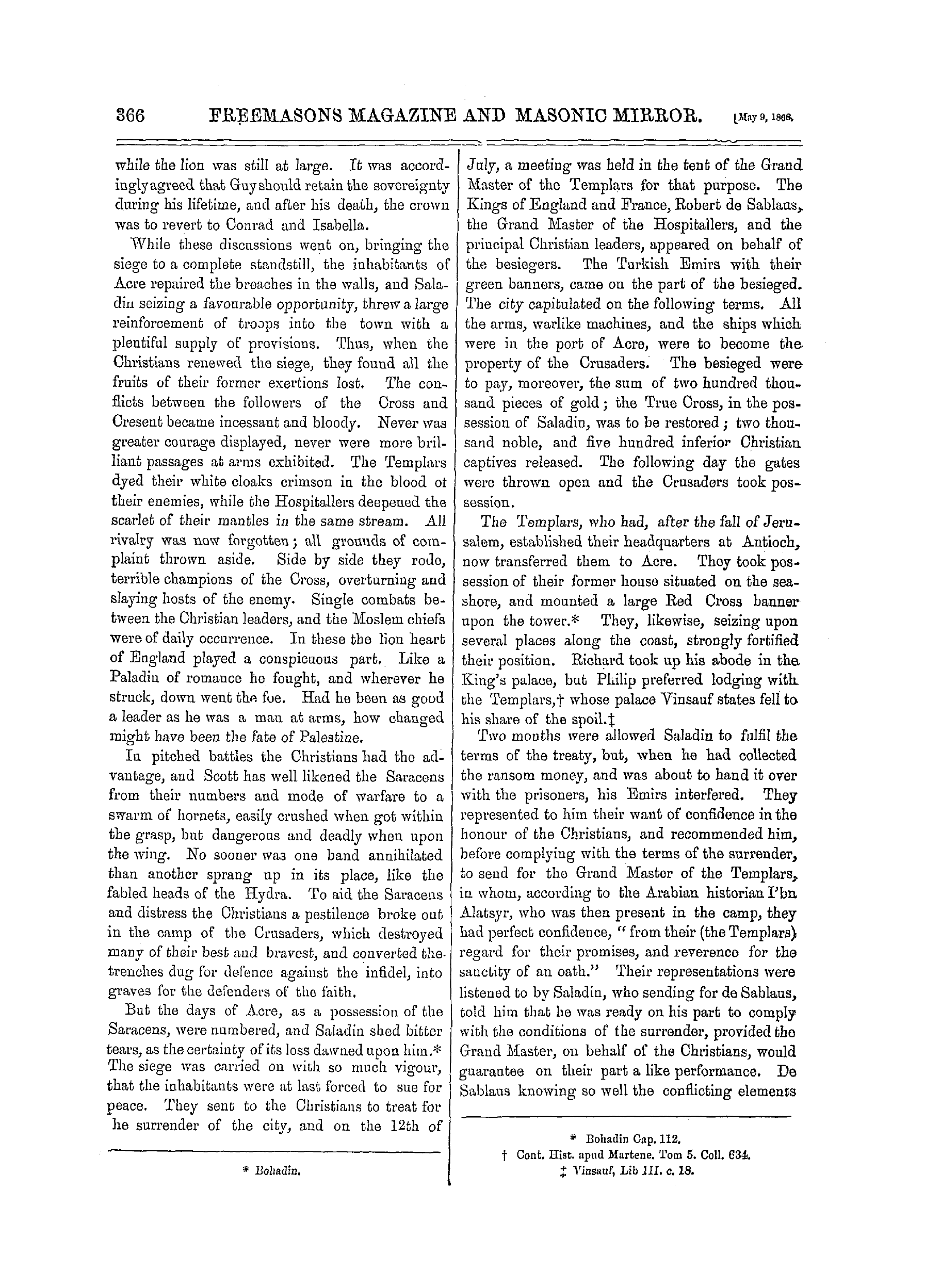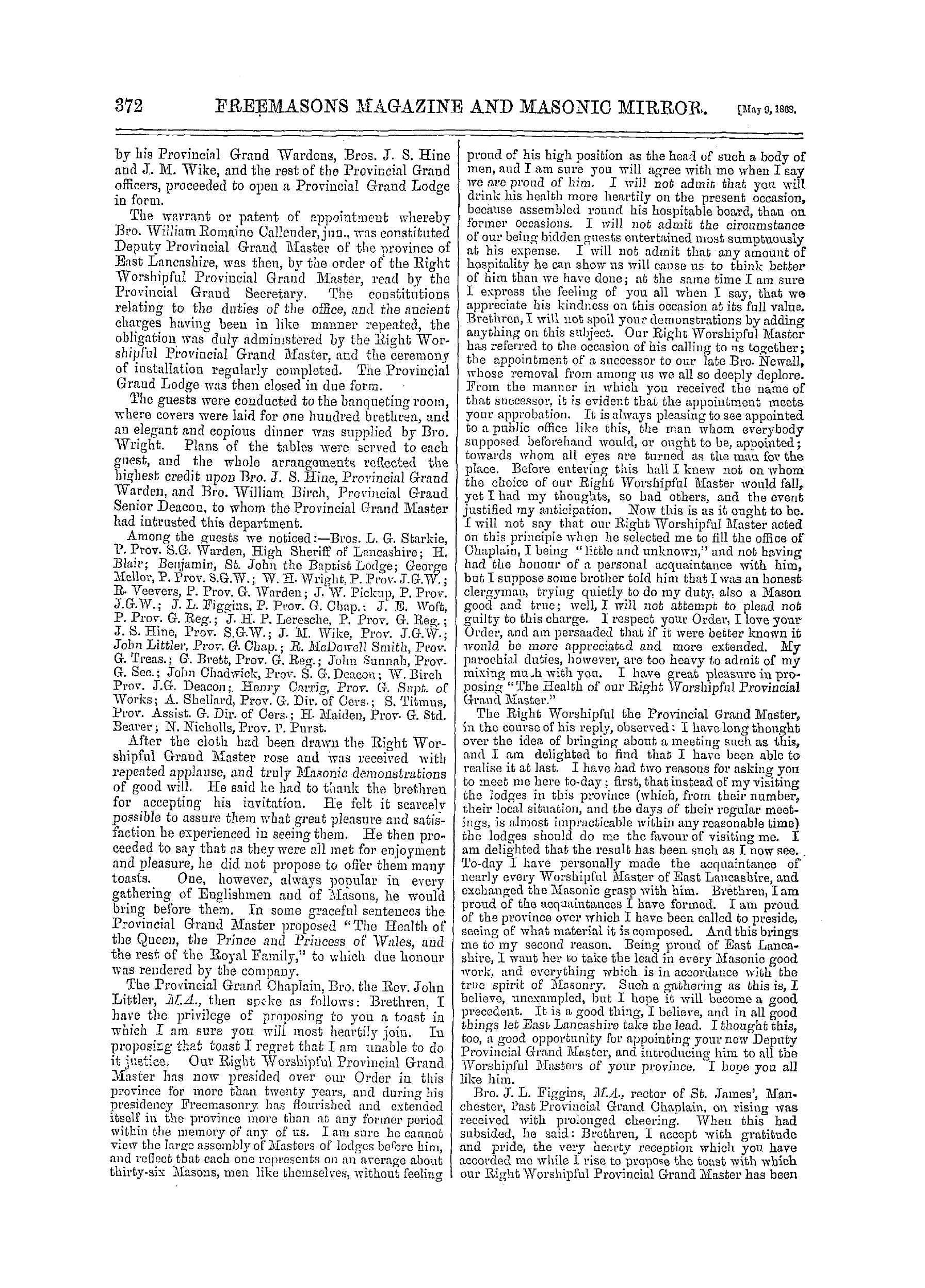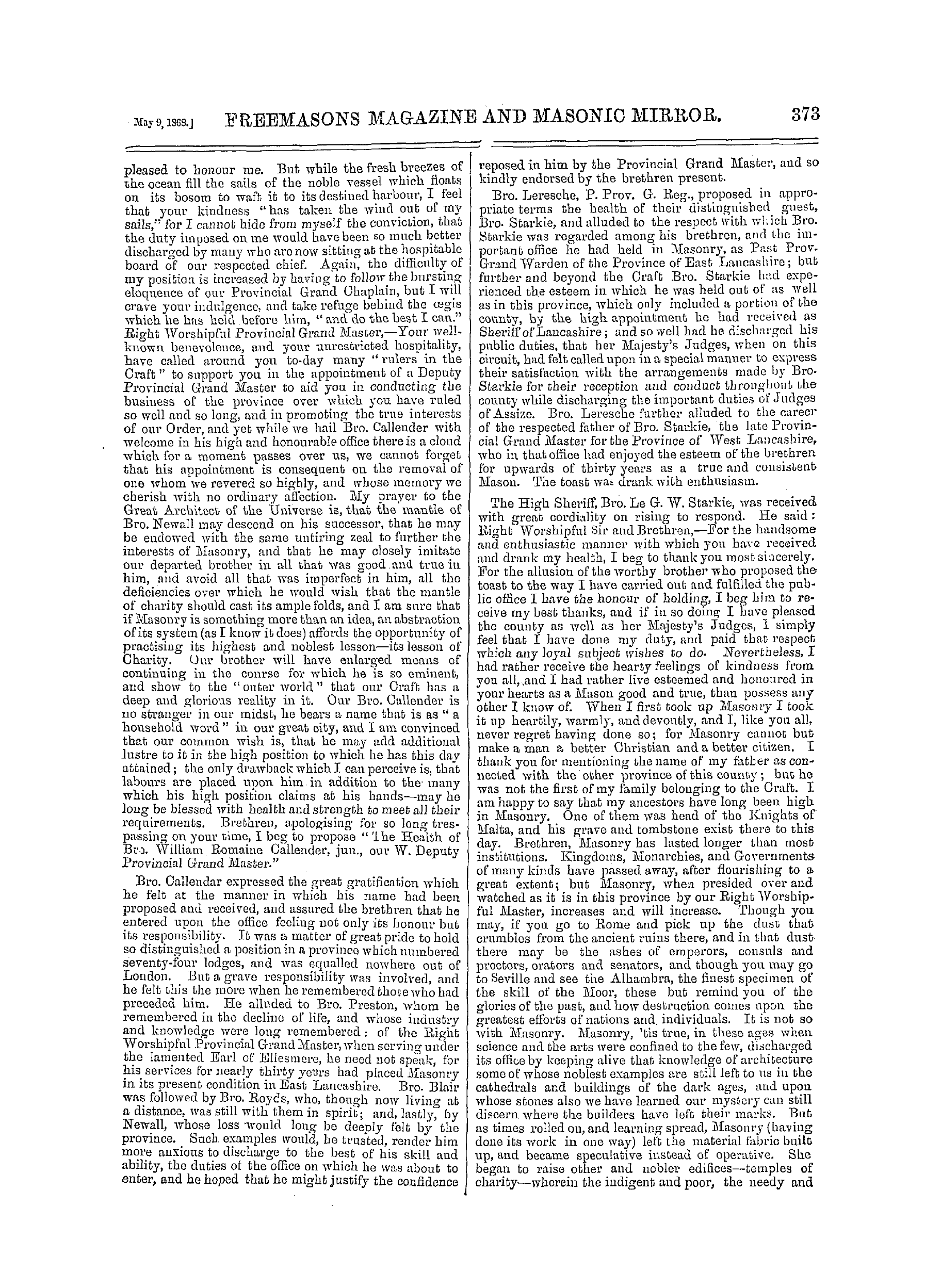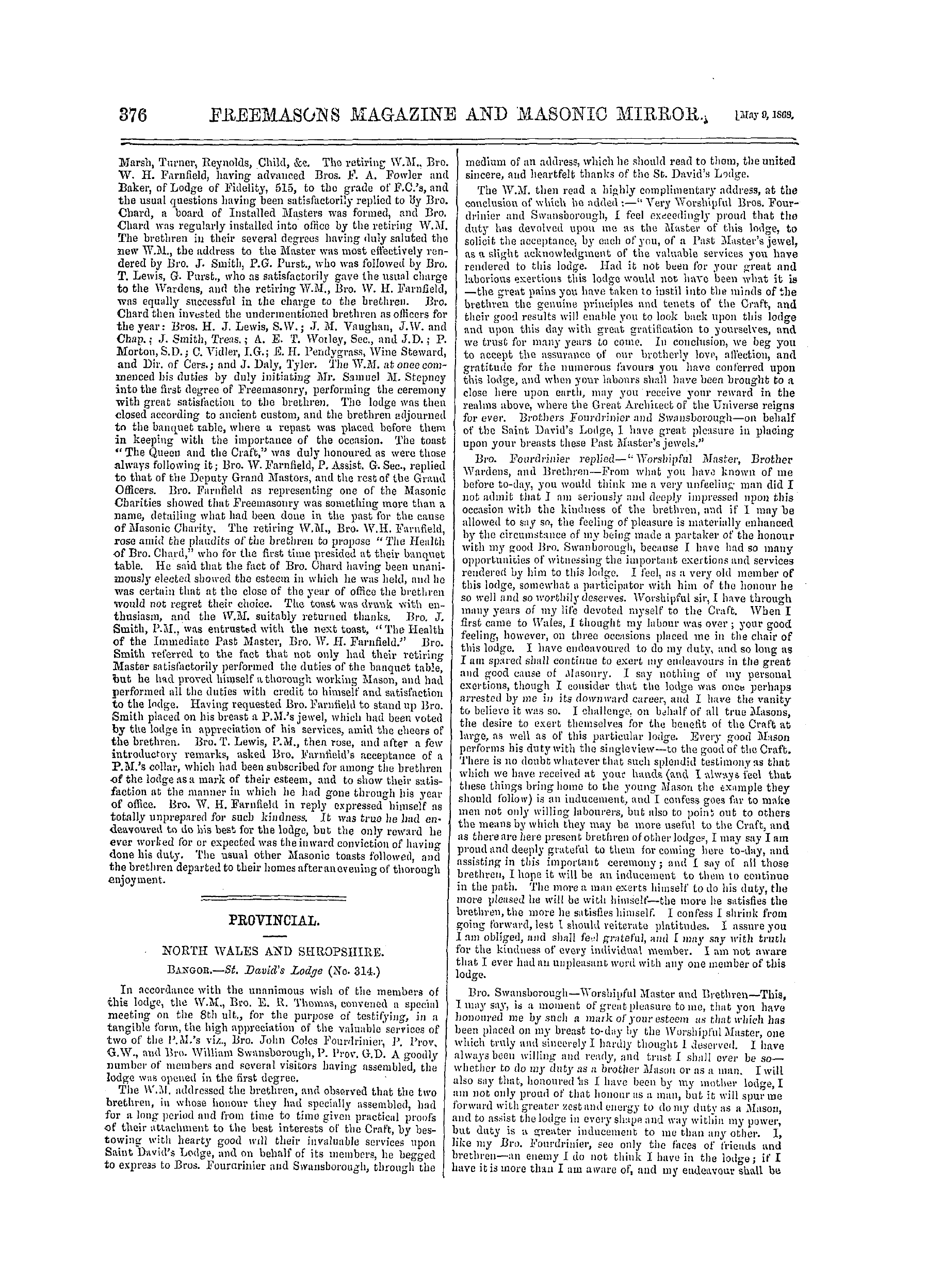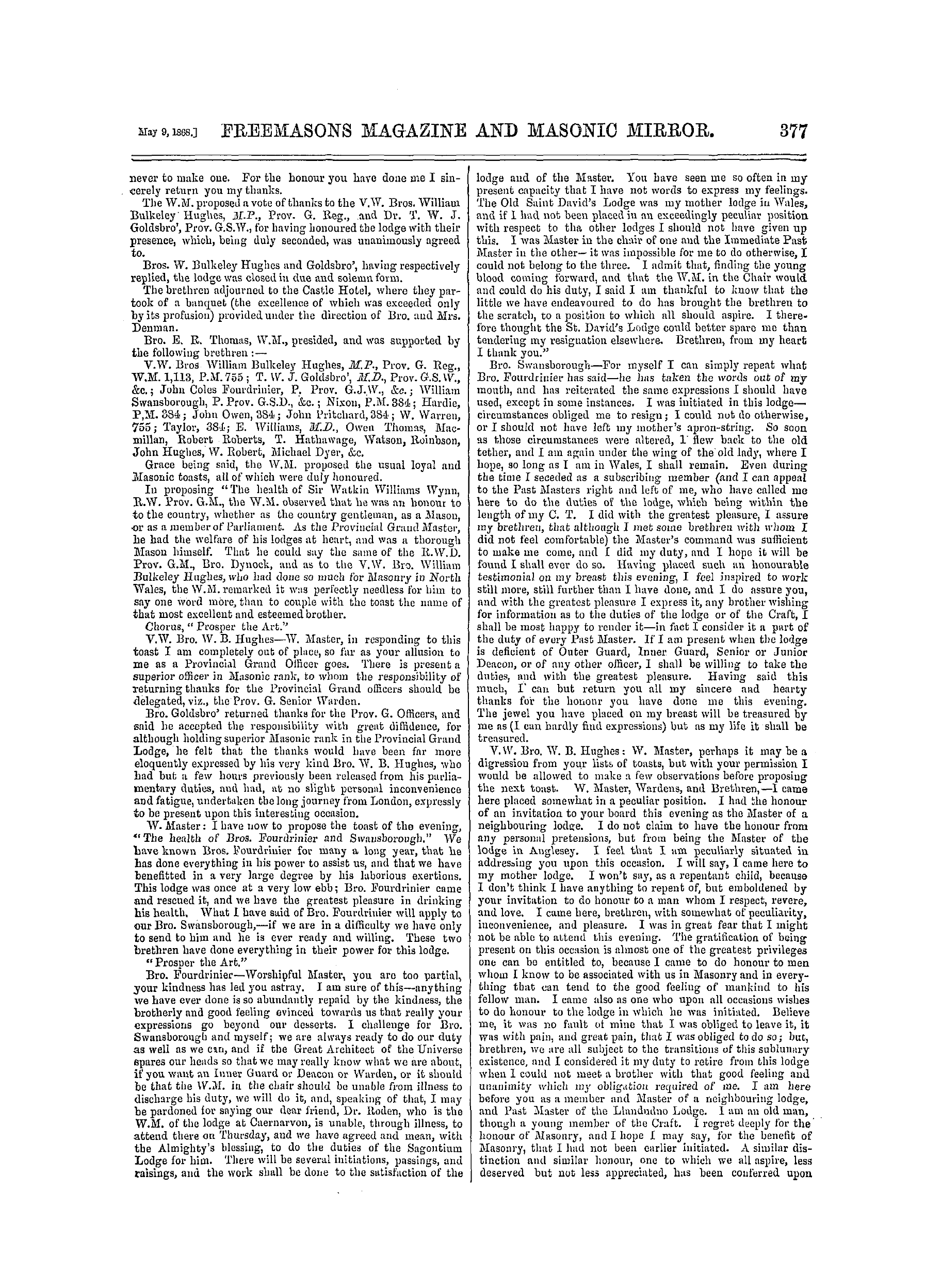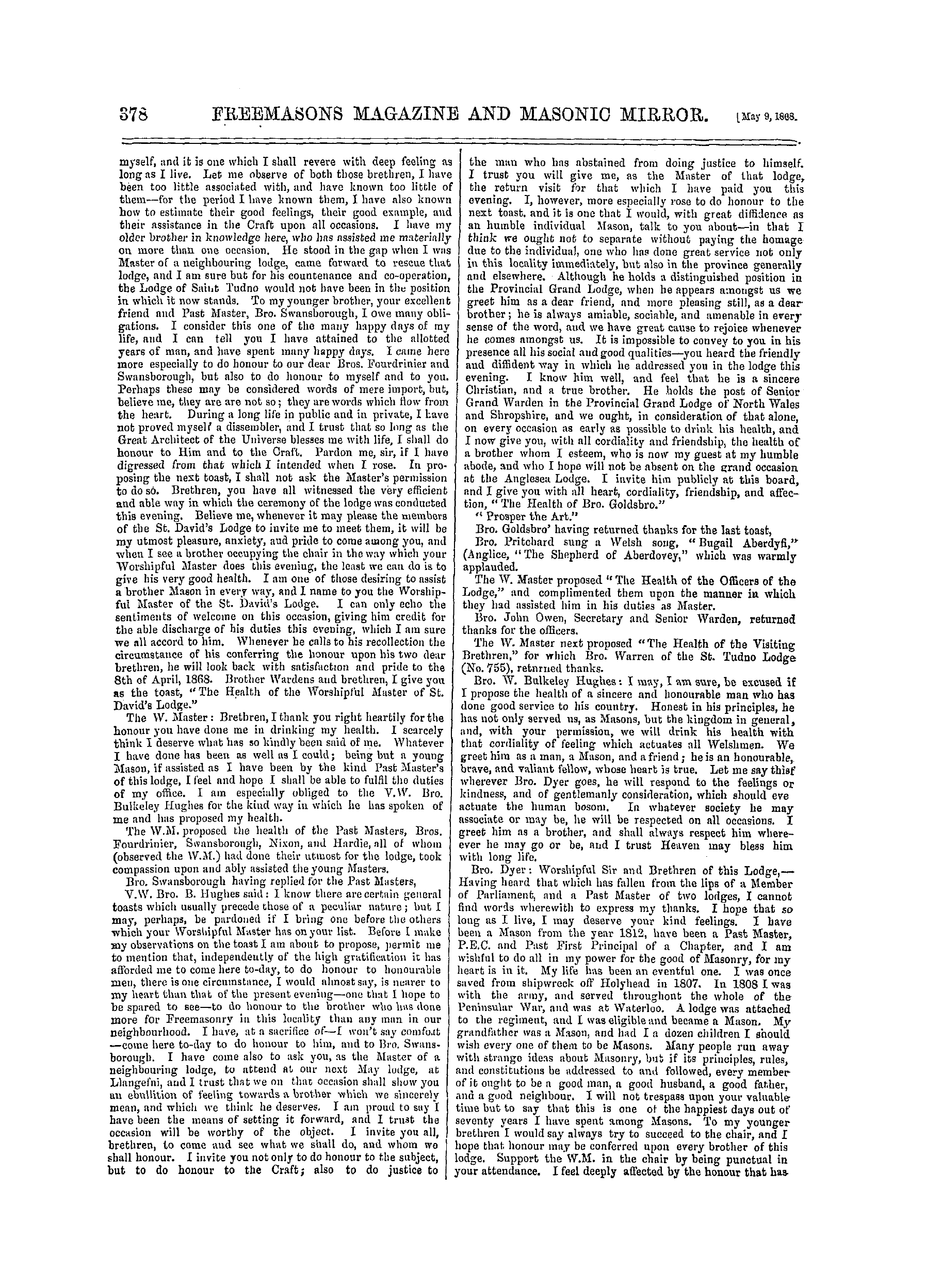-
Articles/Ads
Article AN ANALYSIS OF ANCIENT AND MODERN FREEMASONRY. ← Page 2 of 2 Article AN ANALYSIS OF ANCIENT AND MODERN FREEMASONRY. Page 2 of 2 Article (No. 8.)—THE PROVINCE OF JERSEY. Page 1 of 4 →
Note: This text has been automatically extracted via Optical Character Recognition (OCR) software.
An Analysis Of Ancient And Modern Freemasonry.
and expert Mason . Without a serious deportment , cautious examination , patient research , and moral character , our sections and lectures—which are the marrow of science—will be but a dead letter , a stumbling block , a snare , and the three
Grand Principles , and four Cardinal Virtues of Freemasonry will be found in questionable companionship with prejudice , ignorance , and vain glory . These facts were early recognised by the Masons
of the last century , but unfortunately were not fully carried into practice . If there had been many of the stamp of William Hutchinson , and William Preston , the ancient landmarks would soon have been restored , and the Craft degrees acknowledged to be the acme of Freemasonry , but they -were powerless of themselves to repair the havoc
and losses occasioned by neglect of the ancient ceremonials ; and so in process of time , the third degree was allowed to be actually divested of its chief distinction and grand design . Bro . Hutchinson made some additions to the lecture about
A . D . 1763 , and Bro . William Preston , the Historian of the Craft , likewise enlarged and improved them as to style , matter , and arrangement . Soon after the union of 1813 , the finishing stroke is supposed to have been given them ( under the
supervision of the " Lodge of Reconciliation " ) , by Bros . Samuel Hemmings , and William Williams , ( the compiler ofthe " Book of Constitutions , " 2 nd part , 1835 , and 1827 ) , of which system the late Bros . Peth , Gilkes , Stephen Barton , Wilson , and other Masonic worthies ( now , alas ! no more ) were able and willin ° - instructors .
The leading minds of the Grand Lodge , however , by degrees obscured ancient , and elevated modern Freemasonry , hence our ceremonials partake mostly of the latter part of the eventful eighteenth century .
In concluding the 1 st chapter of " Modern Freemasonry " we feel compelled to again refer to the sublime nature of the Master Mason ' s degree , which even now , although divested of part of its ritual under the English rite , is still the monarch
of degrees , and unequalled for grandeur and importance in the Masonic edifice , when veined in connection with its history . The revered Dr . . Crucefix well said that "The Master Mason can learn nothing beyond the third degree . " There was in fact nothing higher than Master Mason in the last century , for it possessed
An Analysis Of Ancient And Modern Freemasonry.
the three essential qualifications of sublimity , universality and natural religion ; it contained Christianity veiled , and fidelity as its corner stone , and was emphatically Freemasonry . No other degree in its forms and nomenclatui-e was so
homely simple and adapted to the popular comprehension , yet withal so majestic in nature , and imposing and instructive in dramatic and moral effect , although under the York Rite , the whole grandeur of the third degree is not witnessed until
exaltation to the Royal Arch , full Masonic light is obtainable in other rites and Grand Lodges , wherein the Royal Arch is unknown and unrecognized , under which authority the Master Mason really attains the summit of Masonry , and is raised
according to the ceremonials of the Craft anterior to the introduction of the Royal Arch ; so that Royal Arch Masons under the York Rite , would be no farther advanced than Master Masons belonging to the Grand Lodge of Bayrenth , Royal York ,
Berlin , and others , who still continue to impart to the brethren of the third degree the ancient word , which according to the distinguished Mason , the Rev . Dr . George Oliver , corresponds in meaning with the well-known name of the bountiful provider of our wants , and the author of all good , viz : " The Great Architect of the Universe . "
(No. 8.)—The Province Of Jersey.
( No . 8 . )—THE PROVINCE OF JERSEY .
Freemasonry appears to have existed in Jersey for at least six centuries , a fact which may well be regarded with pride by modern Craftsmen , for it is doubtful whether any other society of equal antiquity exists in the island . In the Ereemasons '
Magazine for October 5 th , 1861 , Bro . William Kelly , Deputy-Grand Master for the Province of Leicester , remarked that : — " At the church of St . Lawrence , Jersey , there is a Masonic gravestone of the 13 th century , which is engraved in
Cutt ' s work , on monumental slabs . It has incised upon it a double triangle within ^ a circle , the whole enclosed within a square . " In company with Bro . Dr . Kitchener , P . M . and P . G . D . of Jersey , and Bro . P . L . M . NicoIIe , of
Doyle ' s Lodge of Fellowship , Guernsey , we visited St . Lawrence , in the hope of identifying this Masonic tombstone ; but our search for it proved unavailing . The rector had never heard of it , and we fear it has become obliterated . We saw , however , a tombstone head with Royal Arch
Note: This text has been automatically extracted via Optical Character Recognition (OCR) software.
An Analysis Of Ancient And Modern Freemasonry.
and expert Mason . Without a serious deportment , cautious examination , patient research , and moral character , our sections and lectures—which are the marrow of science—will be but a dead letter , a stumbling block , a snare , and the three
Grand Principles , and four Cardinal Virtues of Freemasonry will be found in questionable companionship with prejudice , ignorance , and vain glory . These facts were early recognised by the Masons
of the last century , but unfortunately were not fully carried into practice . If there had been many of the stamp of William Hutchinson , and William Preston , the ancient landmarks would soon have been restored , and the Craft degrees acknowledged to be the acme of Freemasonry , but they -were powerless of themselves to repair the havoc
and losses occasioned by neglect of the ancient ceremonials ; and so in process of time , the third degree was allowed to be actually divested of its chief distinction and grand design . Bro . Hutchinson made some additions to the lecture about
A . D . 1763 , and Bro . William Preston , the Historian of the Craft , likewise enlarged and improved them as to style , matter , and arrangement . Soon after the union of 1813 , the finishing stroke is supposed to have been given them ( under the
supervision of the " Lodge of Reconciliation " ) , by Bros . Samuel Hemmings , and William Williams , ( the compiler ofthe " Book of Constitutions , " 2 nd part , 1835 , and 1827 ) , of which system the late Bros . Peth , Gilkes , Stephen Barton , Wilson , and other Masonic worthies ( now , alas ! no more ) were able and willin ° - instructors .
The leading minds of the Grand Lodge , however , by degrees obscured ancient , and elevated modern Freemasonry , hence our ceremonials partake mostly of the latter part of the eventful eighteenth century .
In concluding the 1 st chapter of " Modern Freemasonry " we feel compelled to again refer to the sublime nature of the Master Mason ' s degree , which even now , although divested of part of its ritual under the English rite , is still the monarch
of degrees , and unequalled for grandeur and importance in the Masonic edifice , when veined in connection with its history . The revered Dr . . Crucefix well said that "The Master Mason can learn nothing beyond the third degree . " There was in fact nothing higher than Master Mason in the last century , for it possessed
An Analysis Of Ancient And Modern Freemasonry.
the three essential qualifications of sublimity , universality and natural religion ; it contained Christianity veiled , and fidelity as its corner stone , and was emphatically Freemasonry . No other degree in its forms and nomenclatui-e was so
homely simple and adapted to the popular comprehension , yet withal so majestic in nature , and imposing and instructive in dramatic and moral effect , although under the York Rite , the whole grandeur of the third degree is not witnessed until
exaltation to the Royal Arch , full Masonic light is obtainable in other rites and Grand Lodges , wherein the Royal Arch is unknown and unrecognized , under which authority the Master Mason really attains the summit of Masonry , and is raised
according to the ceremonials of the Craft anterior to the introduction of the Royal Arch ; so that Royal Arch Masons under the York Rite , would be no farther advanced than Master Masons belonging to the Grand Lodge of Bayrenth , Royal York ,
Berlin , and others , who still continue to impart to the brethren of the third degree the ancient word , which according to the distinguished Mason , the Rev . Dr . George Oliver , corresponds in meaning with the well-known name of the bountiful provider of our wants , and the author of all good , viz : " The Great Architect of the Universe . "
(No. 8.)—The Province Of Jersey.
( No . 8 . )—THE PROVINCE OF JERSEY .
Freemasonry appears to have existed in Jersey for at least six centuries , a fact which may well be regarded with pride by modern Craftsmen , for it is doubtful whether any other society of equal antiquity exists in the island . In the Ereemasons '
Magazine for October 5 th , 1861 , Bro . William Kelly , Deputy-Grand Master for the Province of Leicester , remarked that : — " At the church of St . Lawrence , Jersey , there is a Masonic gravestone of the 13 th century , which is engraved in
Cutt ' s work , on monumental slabs . It has incised upon it a double triangle within ^ a circle , the whole enclosed within a square . " In company with Bro . Dr . Kitchener , P . M . and P . G . D . of Jersey , and Bro . P . L . M . NicoIIe , of
Doyle ' s Lodge of Fellowship , Guernsey , we visited St . Lawrence , in the hope of identifying this Masonic tombstone ; but our search for it proved unavailing . The rector had never heard of it , and we fear it has become obliterated . We saw , however , a tombstone head with Royal Arch


